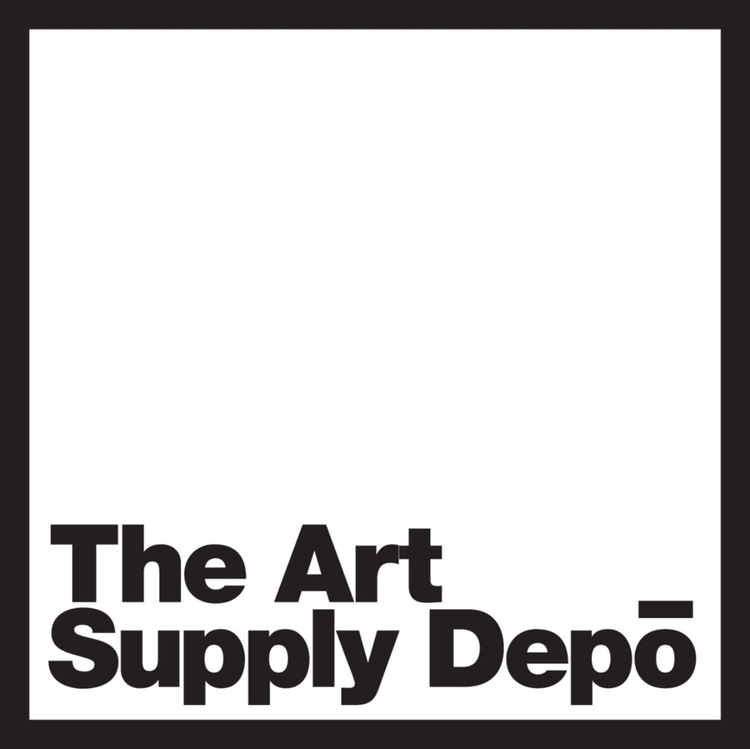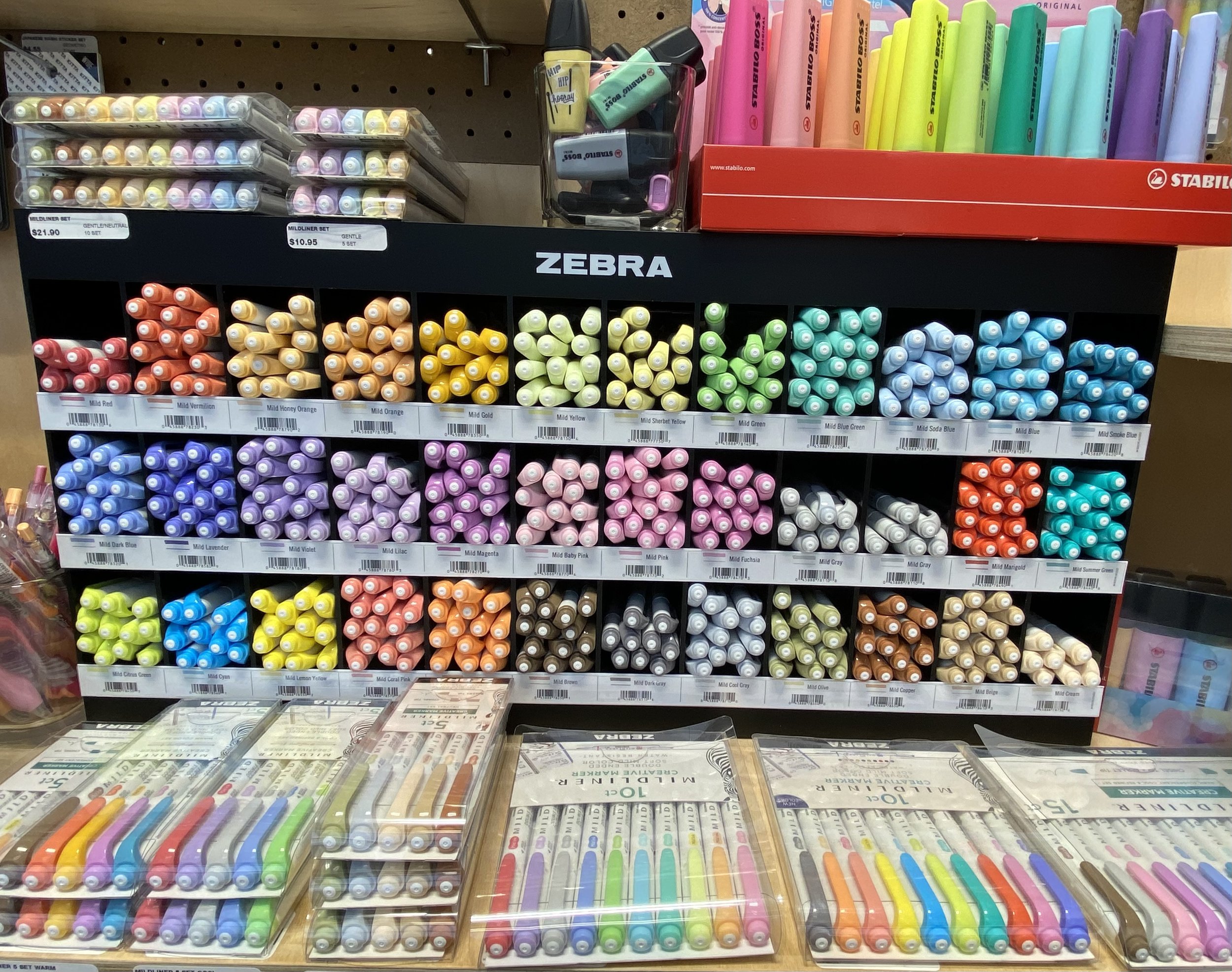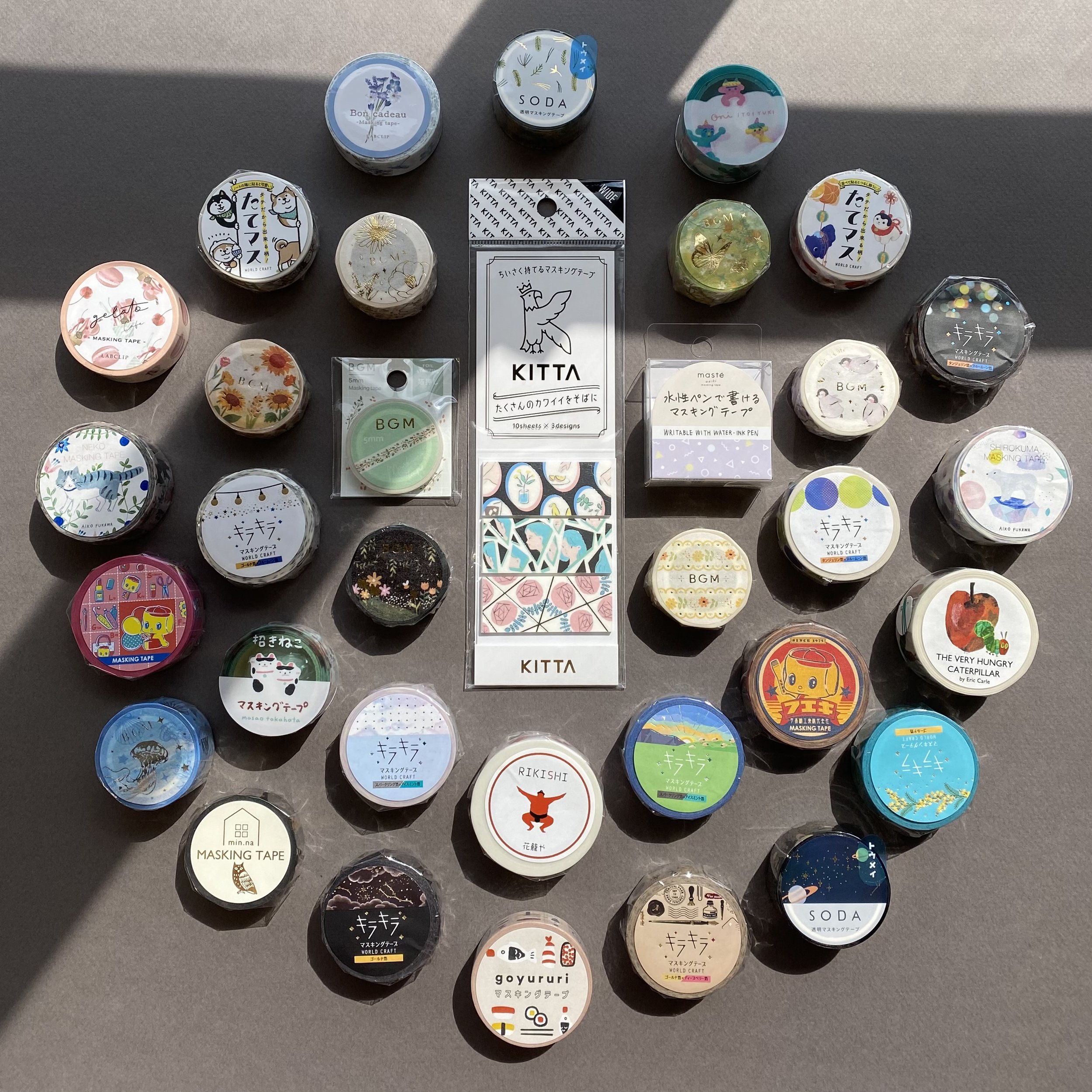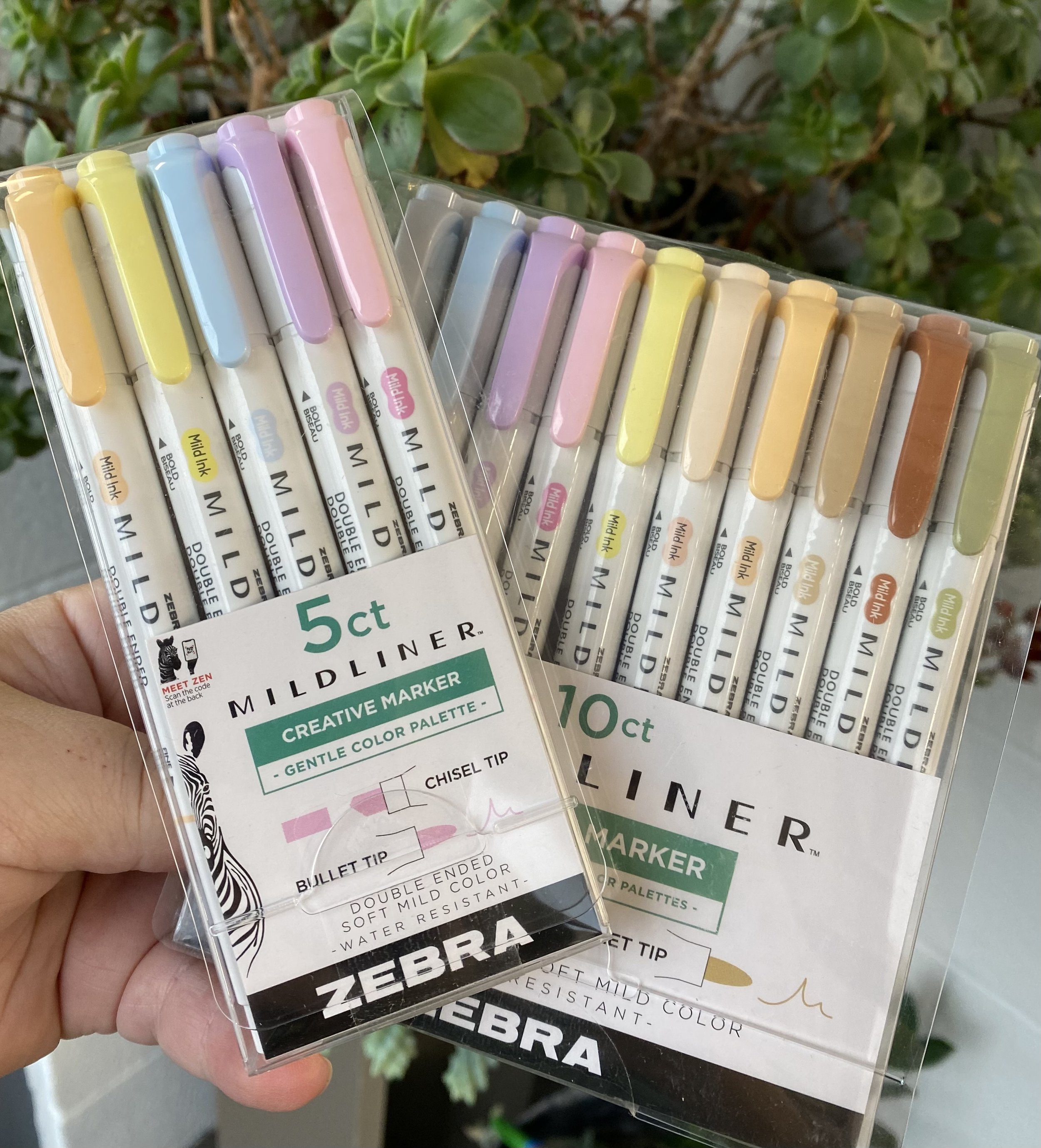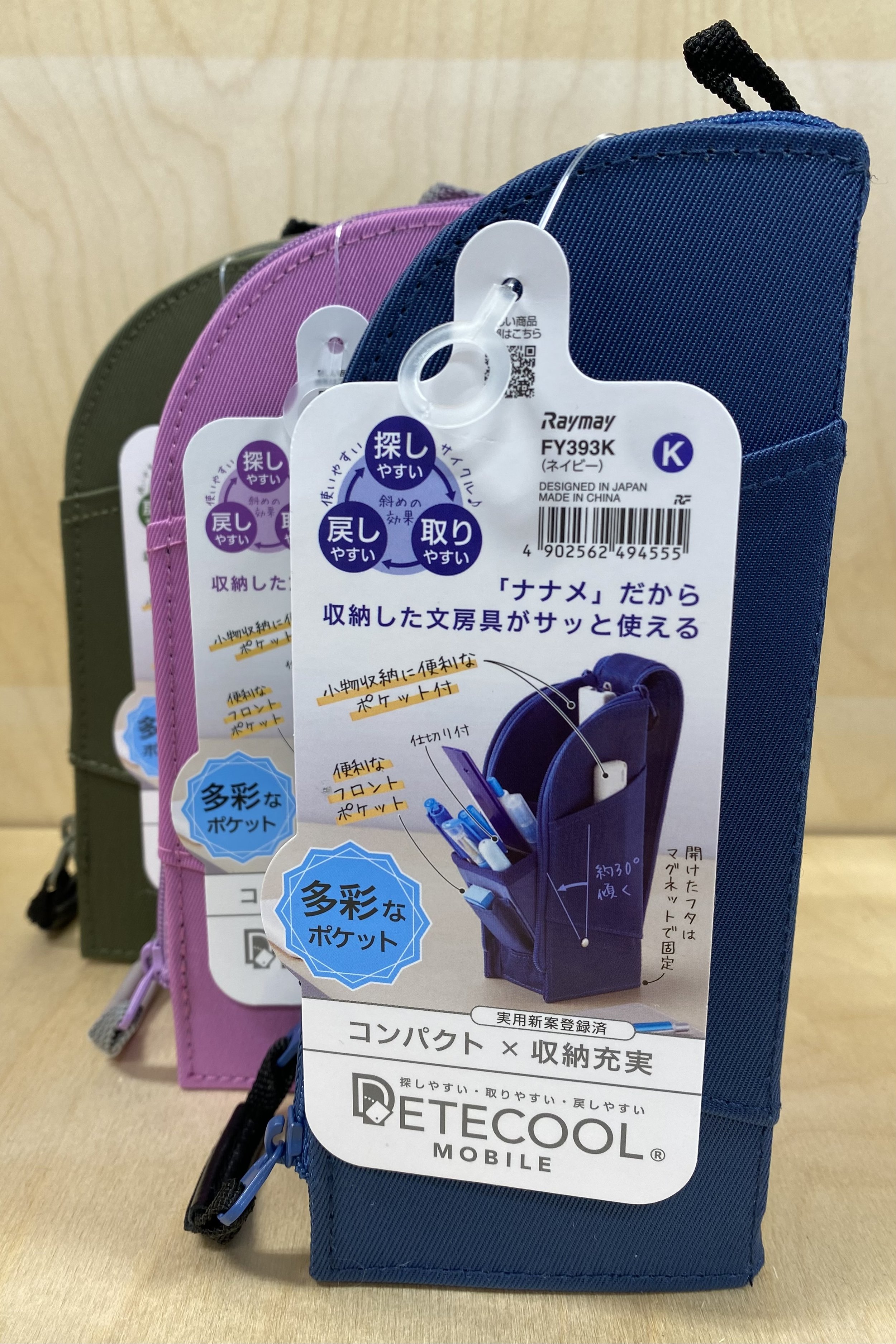Both locations have recently started importing new Washi tape, storage pouches, and hard to source zebra mildliners direct from Japan. Stop by and see what’s new! We receive new shipments from Japan every other month in each store.
Watercolor Paper Basics
Watercolor Paper:
The surface type, sizing, and composition of your paper make a huge impact on your finished artwork.
Watercolor paper can be made of wood pulp (cellulose) or cotton. Highest quality, artist grade paper is made of 100% cotton, as it is more durable, archival, and absorbent than wood pulp. Wood pulp papers are recommended for beginners. Cotton is suggested for professionals and those seeking a more professional look.
The stability of cotton allows for additional working and layering of paint
All WC papers have an invisible coating, called sizing that regulates if and how water + pigments are absorbed. Drawing papers are generally not sized, hence they buckle when wet. A great layer of sizing will allow water to absorb, but prevent your pigments (color) from absorbing in to the paper, leaving a bright paint stroke behind.
WC papers are available in may weights (thicknesses). 90lb is generally the lightest used for WC, 140lb is considered the standard, and 300lb is the heaviest stock, with a thickness similar to mat board. For reference, tracing paper is 8lb, copy paper is 24-30lb, sketch paper is 50lb, drawing paper is 80lb.
Watercolor papers come in three surface types:
Hot Press (HP) is a smooth surface used for very detailed work, where every brush stroke is intended to show. Paint stays wet on a Hot Press surface longer than others. The surface is so smooth that water has a difficult time absorbing into the paper, and the paint sits longer on the surface. This can sometimes cause puddles or pools of color to form and show in the finished work. Careful application of paint + water is required to prevent "splotching" on Hot Press. HP papers are suggested for portraits, comic-book style inking, and other techniques which involve fine lines. It is also beloved by abstract artists who want their watercolors to flow freely and make random patterns when drying.
Cold Press (CP) is a slightly textured surface and is the most common paper selection. The paper's texture or tooth is more open than hot press, and water + pigments absorb quickly, generally creating a more uniform area of color. This paper is thought of being "more forgiving for beginners." CP papers are suggested for landscapes and other applications where a slight variation of surface texture would contribute to the look of the finished art.
Rough Press (RP) is the least common paper surface, but perhaps because it is little know and often overlooked. It has more tooth / texture than cold press and lends the most character to the finished artwork. Watercolors take on a granulated appearance as pigments settle into the texture of the paper when drying. It is beloved by abstract + landscape artists for it's unique texture. RP papers more limited in available formats than CP and HP, for example RP sketchbooks are the most rare.
Which surface is right for you?
Surface texture is totally subjective based upon your application methods and preferred finished look. If you're not sure what you want, stop by and pick up our new TINY STONEHENGE WATERCOLOR SAMPLE PADS or individual sheets of watercolor papers in 22x30 size, or small notebook size, to compare. Note that paper surfaces will vary across all brands and paper weights, so you might love a 140lb Cold Press paper from one manufacturer, but dislike a 140lb Cold Press paper from another.
Cadmium Yellow
Claude-Oscar Monet, Water-Lilies, after 1916
ARC EN CIEL
VOL. VIII.
CADMIUM YELLOW
Many artists are familiar with the name Cadmium. Cadmium yellows and reds have long been standard required paint colors for beginner to advanced painters. Cadmium yellow expresses color like no other. Besides its use as an artists pigment in oils, acrylics and watercolors, it has made regular appearances in toys, soap, glass, plastics and perhaps most famously, the New York Taxi, since production began in 1840. Why are these colors so popular, and furthermore, why are they so expensive as opposed to other hues of yellow and red? The truth is, to most painters, any other yellow just will not do. There is no other yellow with as much opacity, tinting strength, permanence and brilliance. Cadmium yellow is reliable and intense, two things painters find irreplaceable.
The relative cost of any paint always depends on how difficult it is to source, create, or process the pigment within the tube. Cadmium is an earth mineral that must be mined, processed and fused extensively before adding into a binder to make that extraordinarily luminous yellow paint. It is also pretty rare in the Earth's crust, with less than one-fifth of a gram of the metal (one fifth-ish of the metal in a thumbtack) in every ton of crustal material. (Source 1)
HAPPY ACCIDENTS
THE DISCOVERY OF CADMIUM
The source of cadmium yellow pigment is cadmium sulfide. In its pure form, cadmium is a silvery white bluish color. In 1817, German scientist Friedrich Stromeyer discovered a new metallic element, called cadmium, on accident when heating zinc in his laboratory. Typically, zinc remains white when heated, but while conducting routine tests, he observed a sample of zinc carbonate that formed a bright yellow oxide rather than white. Stromeyer suggested it was suitable for artist pigments, however it wasn't until the 1840s that the color began being produced industrially.
In the early years of production, cadmium sulfide was prepared with an acid solution of cadmium salt (either chloride or sulfate) which was heated with hydrogen sulfide gas until a powder was formed. Hues ranging from a very light lemon yellow to a deep orange were made in this way. A range of colors from very light yellow to deep orange and red can be made from the same mineral through variation of processing and particle size. The particle sizes of the deeper cadmiums are about fifty times larger than the paler varieties.
The deeper varieties of cadmium yellow and orange are the most permanent. Paler varieties are known to fade on exposure to bright or extreme sunlight. Cadmium pigments are classified as absolutely permanent for interior applications, but are not suitable for the exterior applications or for mural painting techniques as they are vulnerable to light & oxygen. When exposed to light, water, and carbon dioxide, cadmium pigments will fade and change color and form cadmium carbonate, a white crystalline compound. Interior permanence of cadmium yellows are excellent.
Cadmium yellow paints are generally available in light, medium, and dark and each variety has a markedly different value, intensity, and relative warmth or coolness when compared to one another. Cadmium Yellow Dark and Cadmium Yellow Medium are warm. Cadmium Yellow Lemon, Cadmium Yellow Light, and Cadmium Yellow Primrose are relatively cool compared to the “dark” and “medium” varieties of paint. If a cadmium color is not labeled with “dark” or “light,” the paint in the tube can always be assumed to be “medium.”
Claude-Oscar Monet, Lavacourt under Snow, 1879
PERMANENT + POPULAR
WHEN CADMIUM YELLOW BECAME THE MOST BRILLIANT
Cadmium colors have been popular with artists since first used as a paint pigment because they are permanent, bright, opaque, dense colors that mix well and predictably with other pigments.
During the Industrial Revolution artists began using colors never used or even seen before. The golden age of chemistry created pigments so new and bold, artists found them absolutely irresistible. Not only did these colors brighten the urban centers, but they widened painters’ access to color compared to the palettes of the Classical Era. Cadmium yellow was a revolution itself - the color was powerful and artists were quick to adopt it into their palettes. Pigment makers + grinders responded and pigment manufacturing became big business.
The birth of these pigment manufacturing during the nineteenth century meant pigments were no longer made specifically for artists’ use, but also for larger industrial coatings and printing industries. Manufacturers would put ready-made oil paints in newly developed collapsible tin tubes, much like the tubes we use today. The invention of the paint tube made these colors readily available + accessible and artists like Claude Monet, Mary Cassatt, Camille Pissaro, and later Cezanne and Matisse used them almost exclusively. (Source 2)
While these new colors were unfavorable to some, Monet and other 19th century artists found them striking. "Monet was so enamored of the new bright colors that he insisted on mixing even his dull tones from these strident pigments. In Monet's Lavacourt under Snow (pictured above) the subdued tones in the cottages, the trees and the pale yellowish sky are not rendered in ochres or earth pigments but are mixed from bright hues including cadmium yellow, cobalt blue, viridian, and vermilion. With viridian, emerald green, synthetic ultramarine, red lake and lead white, these make up the entirety of the palette." (Source 2) The pale lemon colored areas of the sunlit hill are cadmium yellow mixed with lead white. (Source 3)
"The Impressionists shaped the early work of many of the most important painters of the modern age. Van Gogh's work was transformed when he came to Paris and saw their paintings. They gave him the inspiration to use bold, unmixed new colors with glaring brilliance, such as those in The Night Café, 1888." (Source 2)
MODERN PIGMENTS
CADMIUM YELLOW ALTERNATIVES
Artists concerned about studio safety or price of cadmium colors should explore chemically derived yellow pigments such as Hansa Yellow, Azo Yellow, or Indian Yellow. Regular Arc en Ciel readers may remember that, in general, mineral colors are more opaque than their chemically created, more transparent counterparts. None of the chemically derived yellow pigments are as dense or opaque as cadmium yellows, but for some painting applications that may not matter or be preferable. Opacity vs. transparency, intensity of color desired, and ease of application should all be considered before choosing the proper yellow for your studio practice.
Hansa yellow is generally available in “medium” and “light” varieties which would be relatively warm and cool just as the cadmium yellows. They appear very similar to Cadmium colors but are perhaps 30% as opaque as cadmium colors. Hansa Yellow Opaque is available in some paint lines, but is rare as most artists choose Hansa because it is transparent. When looking for a hansa try Gamblin's Hansa Yellow or Williamsburg's Permanent Yellow, they both are made with the pigment Arylide Yellow, which is permanent and lightfast enough for use as the paint of choice for yellow traffic stripes on city streets.
Indian Yellow is a very warm orange-ish yellow that, in thick layers, appears similar to cadmium yellow dark. Although, Indian Yellow is very transparent and ten times more intense when mixed with white as cadmium yellow dark. Because the three substitute chemically derived yellows noted above are all more transparent than the cadmiums, those preferring the opacity of cadmium colors may find it necessary to paint an area with titanium white before covering with a chemical produced yellow.
Liquitex is coming out with a non-cadmium line of paints set to be released in July 2017. They have created the first non-cadmium acrylic paint with the same performance, vibrancy, and lightfastness as cadmium paint, with the only caveat being that it is safer for you. With the introduction of the non-cadmium line, they are getting rid of their line of cadmium hues. As you know, we are able to order almost any art material, so if you want to give these new non-cadmiums a whirl, just holler at us.
STAY SAFE IN THE STUDIO
CADMIUM TOXICITY
Recently cadmium has come into question throughout the EU and a lot of misinformation about the toxicity of cadmium colors used in a controlled studio environment exists. On average, people consume about 30 micrograms of cadmium daily through a normal diet, absorbing 1 to 3 micrograms. There is currently no evidence that these trace levels pose a hazard to healthy adults. Humans can be harmed by a single large exposure to cadmium, and by long-term exposure to higher-than-usual concentrations. In agriculture, crops can absorb cadmium from the soil, creating unsafe percentages of metals in food. Some plants such as willow trees and poplars have been found to clean both lead and cadmium from soil. (Source 6) Most of the cadmium used today is for nickel-cadmium batteries.
Any artist using cadmium paints in a responsible manner need not worry about any adverse reaction to the metal as the pigments are practically insoluble. For instance, Gamblin Artist’s Oil cadmium colors are completely non-toxic when used as intended, due to their low solubility. Their cadmium pigments are manufactured in a blast furnace, making them permanently fused with inorganic sulfide, zinc sulfide or sulfo-selenide to render them insoluble in water (and therefore, our bodies). This is why many cadmium yellows, oranges, reds and chartreuse do not require health warning labels for skin contact or ingestion. There is no cadmium dust or “fumes” that come off paints in the tube, on your palette, or in your painting. Cadmiums do present a health concern if they are inhaled. We recommend you use a NIOSH dust respirator if you sand surfaces made with a high percentage of Cadmium colors or work with cadmiums in dry pigment form.
What does it mean to use paint responsibly? There is no need to work with gloves when oil painting with cadmium or cobalt colors. If you get oil color on your hands, simply wash them with soap and water. Wash your hands thoroughly before smoking, eating or drinking after painting. Do not place food or beverages near your palette or work table. DO NOT finger paint with artist-grade pigments. Still looking for more information on studio safety? Gamblin has an in-depth page dedicated to painting safely, including tips and tricks for storing rags + how to dispose of your paint tubes. Check out more safety tips here. (Source 5)
LESS CADMIUM FOR YOU PSA
DID YA KNOW?
Cigarette smoking seems to be more dangerous than painting with cadmium colors in a studio environment. Smoking is a leading source of cadmium exposure. Each cigarette contains roughly 1 to 2 micrograms of cadmium, and smokers absorb an additional 1 to 3 micrograms of cadmium into their systems daily for every pack they smoke. Studies have shown that smoking more than 20 cigarettes daily can increase cadmium levels in the body tenfold. Yikes! Yet another good reason to kick that habit. (Source 1)
Reference List
- The Facts on Cadmium, http://www.dartmouth.edu/~toxmetal/toxic-metals/more-metals/cadmium-faq.html
- Philip Ball, The making of Cézanne’s palette, Published in Helix magazine, X(2), 2001, http://www.philipball.co.uk/articles/colour/52-the-making-of-cezanne-s-palette
- http://colourlex.com/project/monet-lavacourt-under-snow/
- http://www.webexhibits.org/pigments/indiv/history/cdyellow.html
- https://www.gamblincolors.com/studio-safety/studio-safety-create-without-compromise/
- https://en.wikipedia.org/wiki/Cadmium
